Hey Guys - This is a test of my 23 Outlander PHEV to evaluate what happens when we select higher than B2 mode while in EV mode which causes the engine to start. (Depending on HV battery SOC)
As the car travels in EV mode in “D” (drive) the processor defaults regen level to B2 setting.
As we move “B” mode (regen) to either 3, 4, or 5, the gas engine will immediately start and begin a warm-up sequence running at 1500 rpm raising temperature to roughly 100+ degrees and to circulate oil thru the engine. Once the engine warms, it then decreases speed to around 1300 rpm in a readiness state.
During the mode change, the main processor calls up a protocol allowing the drive motors two continue to generate regen power to slow the car, however instead of using the regen to charge the battery, it instead must dissipate the regen energy in another form.
Therefore, rather than charge the battery the current is instead diverted to the engine starter / generator motor which I nick-named as a “High Speed Spin-up Sequence”
Therefore, as the accelerator is let off, the regen power created by the drive motors is sent to the engine starter motor, which then accelerates the engine from 1300 rpm high-idle, to well over 3000 rpm, depending on the cars speed. The higher the speed the faster the engine is turned to dissipate regen energy at 65 mph I witnessed RPM at 4000+ rpm.
Considering this is the state in B Mode, there is little to no regen advantages using higher than B2 while in EV mode at times. The Outlander is equipped with large disk and calipers to easily handle slowing the car using the service brake during high SOC.
I included some images captured at the OBD port. The first image shows the engine in a warm up state running at 1500 rpm to reach around 100 degrees.
The second image shows the engine warmed in a B mode “ready state” and lowered to 1300 rpm waiting for regen or speed-up.
The third image shows after releasing the accelerator at 45 mph, the starter motor has now spun the engine to over 3000 rpm to dissipate regen energy.
The next two images show the regen levels from the drive motors as the accelerator is let up at the speed of 45 mph. I noted that regardless if the B mode was in 3-4 or 5 regen level did not change and remained constant.
Regards - Mike
ENGINE WARMUP 1500 rpm
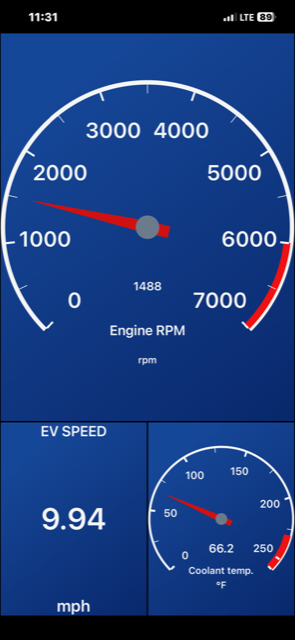
ENGINE IN B MODE READY STAND BY 1300 RPM
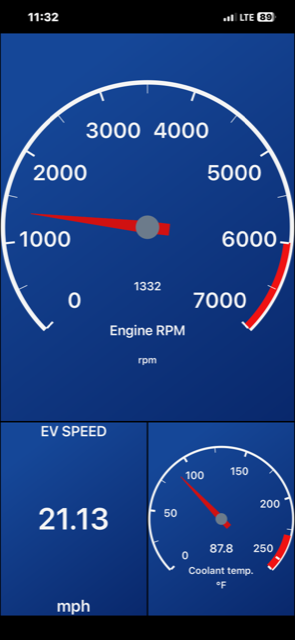
ENGINE IN HIGH SPEED SPIN-UP 45 MPH 4000+ RPM @ 65 MPH
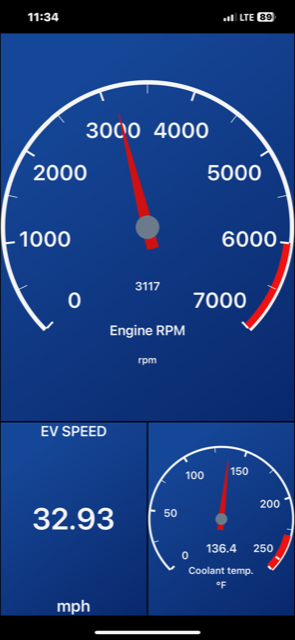
REGEN LEVELS THROTTLE RELEASED
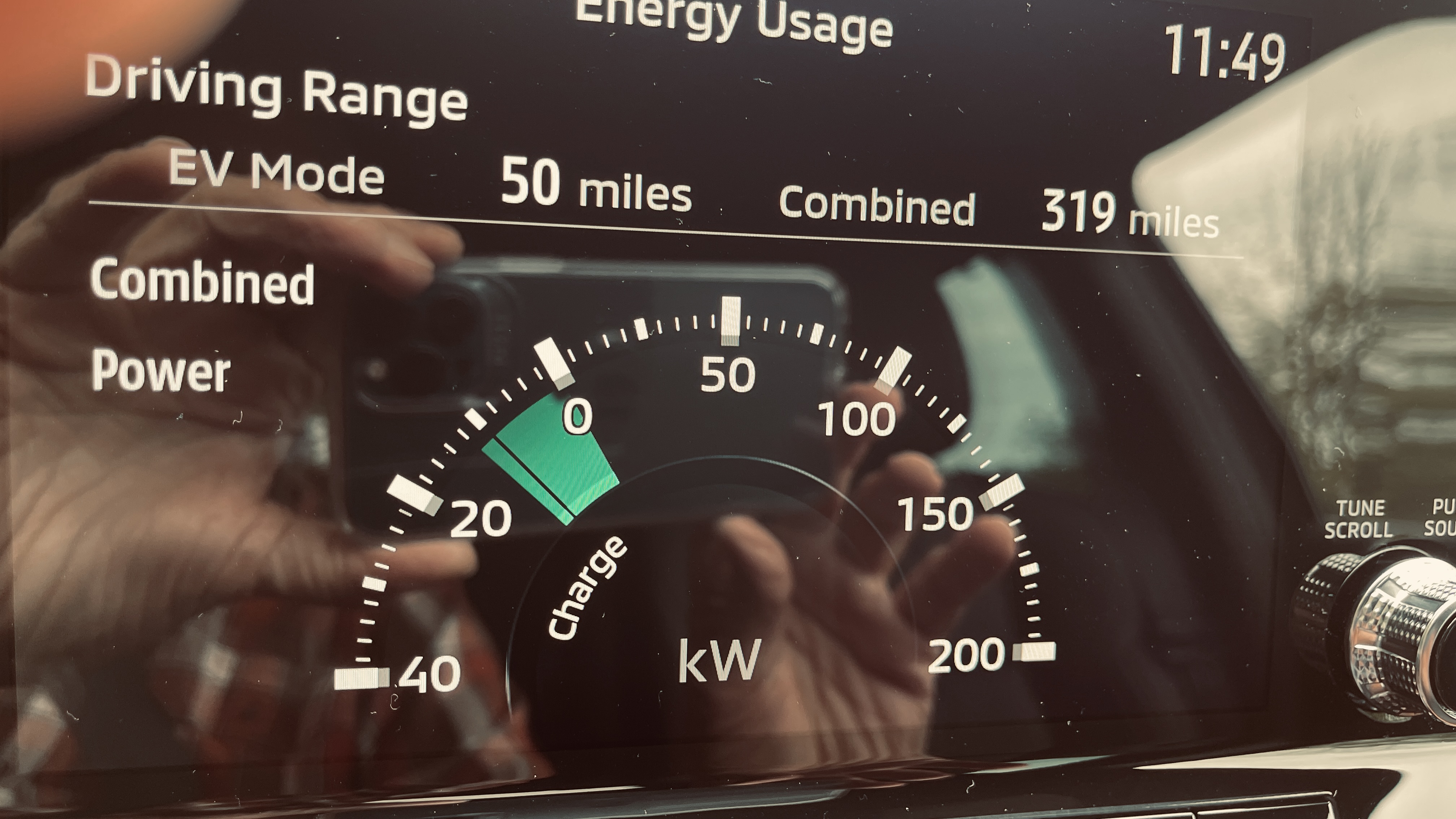
REGEN LEVELS THROTTLE RELEASED
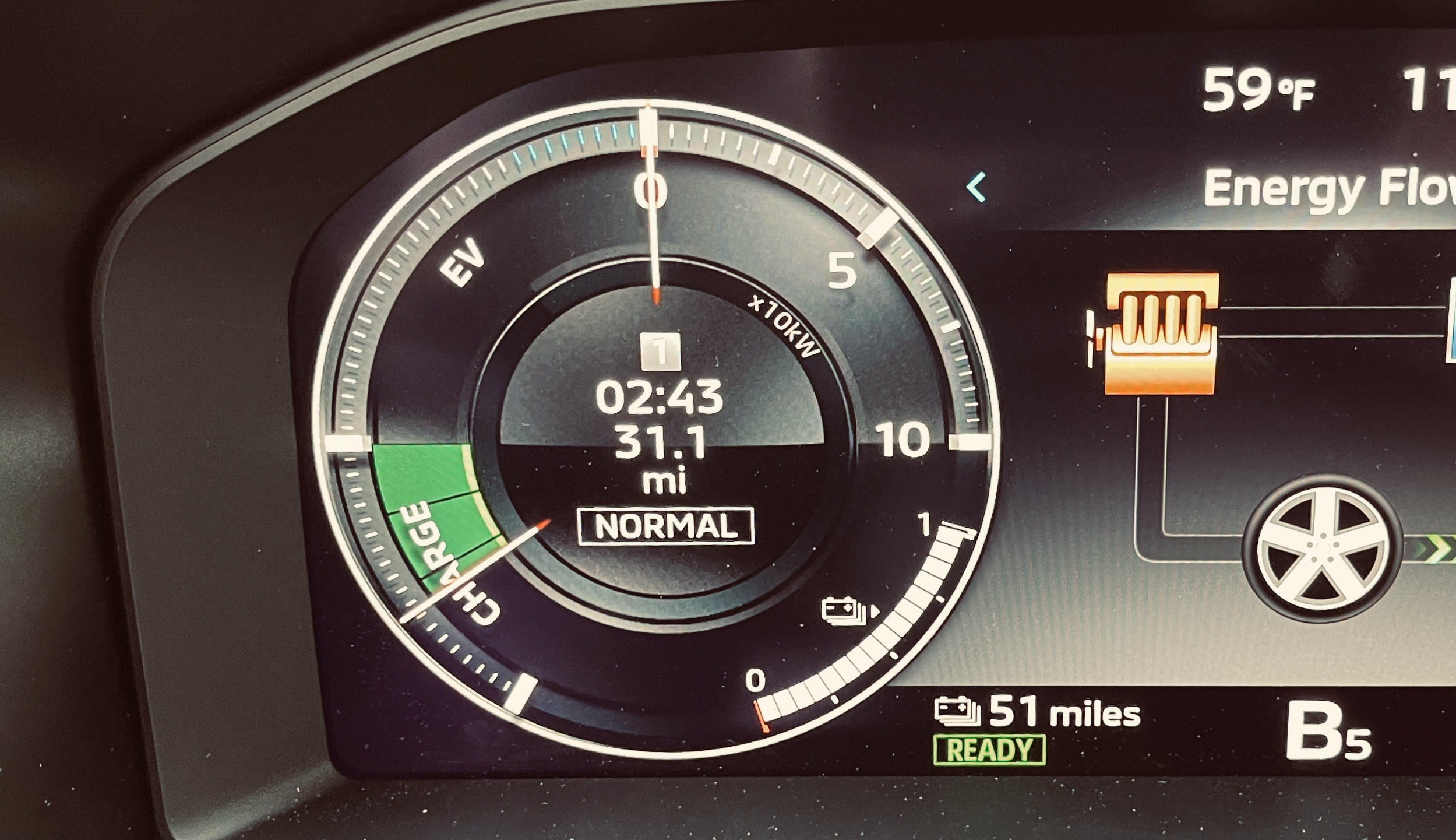
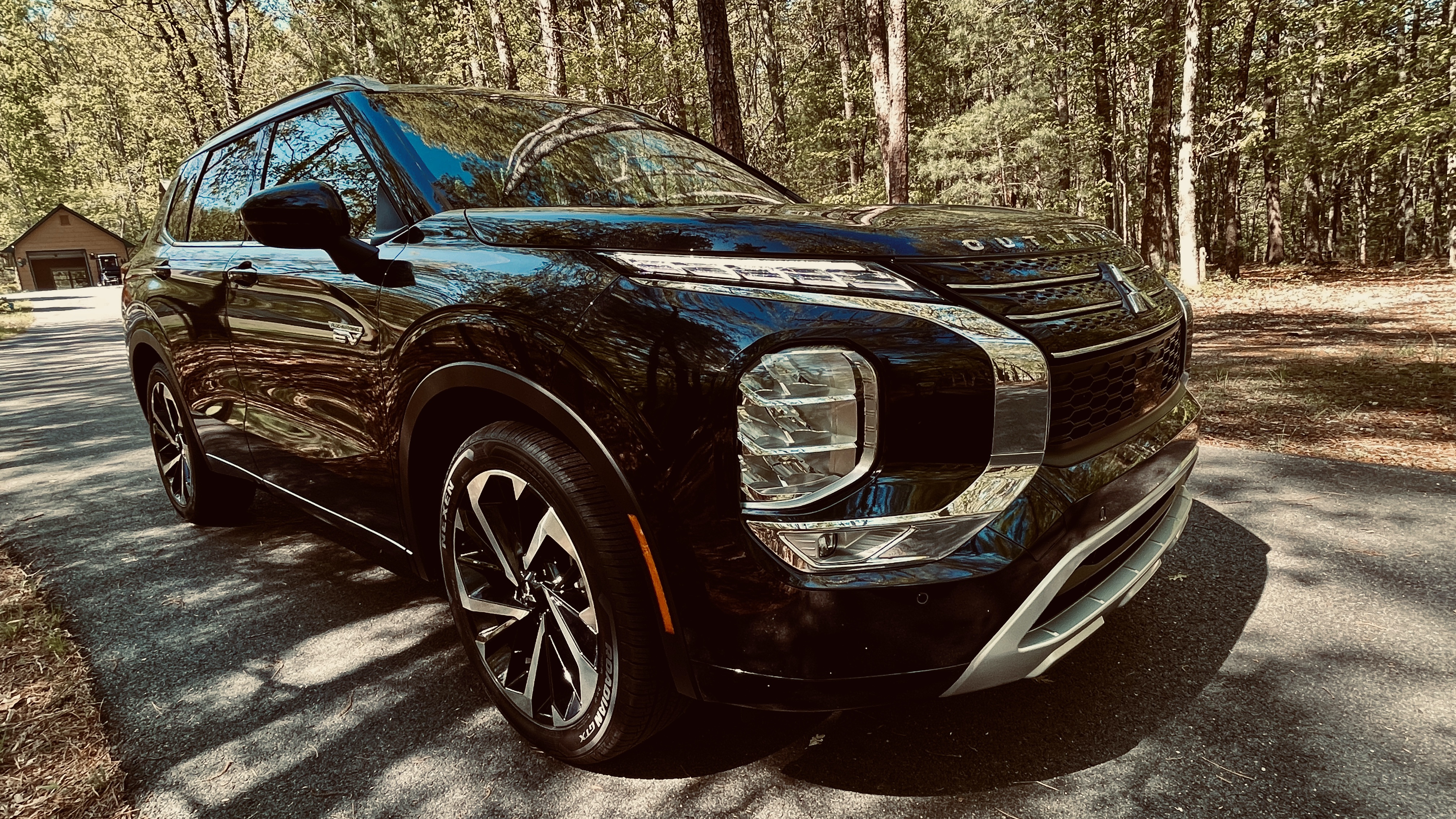
As the car travels in EV mode in “D” (drive) the processor defaults regen level to B2 setting.
As we move “B” mode (regen) to either 3, 4, or 5, the gas engine will immediately start and begin a warm-up sequence running at 1500 rpm raising temperature to roughly 100+ degrees and to circulate oil thru the engine. Once the engine warms, it then decreases speed to around 1300 rpm in a readiness state.
During the mode change, the main processor calls up a protocol allowing the drive motors two continue to generate regen power to slow the car, however instead of using the regen to charge the battery, it instead must dissipate the regen energy in another form.
Therefore, rather than charge the battery the current is instead diverted to the engine starter / generator motor which I nick-named as a “High Speed Spin-up Sequence”
Therefore, as the accelerator is let off, the regen power created by the drive motors is sent to the engine starter motor, which then accelerates the engine from 1300 rpm high-idle, to well over 3000 rpm, depending on the cars speed. The higher the speed the faster the engine is turned to dissipate regen energy at 65 mph I witnessed RPM at 4000+ rpm.
Considering this is the state in B Mode, there is little to no regen advantages using higher than B2 while in EV mode at times. The Outlander is equipped with large disk and calipers to easily handle slowing the car using the service brake during high SOC.
I included some images captured at the OBD port. The first image shows the engine in a warm up state running at 1500 rpm to reach around 100 degrees.
The second image shows the engine warmed in a B mode “ready state” and lowered to 1300 rpm waiting for regen or speed-up.
The third image shows after releasing the accelerator at 45 mph, the starter motor has now spun the engine to over 3000 rpm to dissipate regen energy.
The next two images show the regen levels from the drive motors as the accelerator is let up at the speed of 45 mph. I noted that regardless if the B mode was in 3-4 or 5 regen level did not change and remained constant.
Regards - Mike
ENGINE WARMUP 1500 rpm

ENGINE IN B MODE READY STAND BY 1300 RPM

ENGINE IN HIGH SPEED SPIN-UP 45 MPH 4000+ RPM @ 65 MPH

REGEN LEVELS THROTTLE RELEASED

REGEN LEVELS THROTTLE RELEASED





